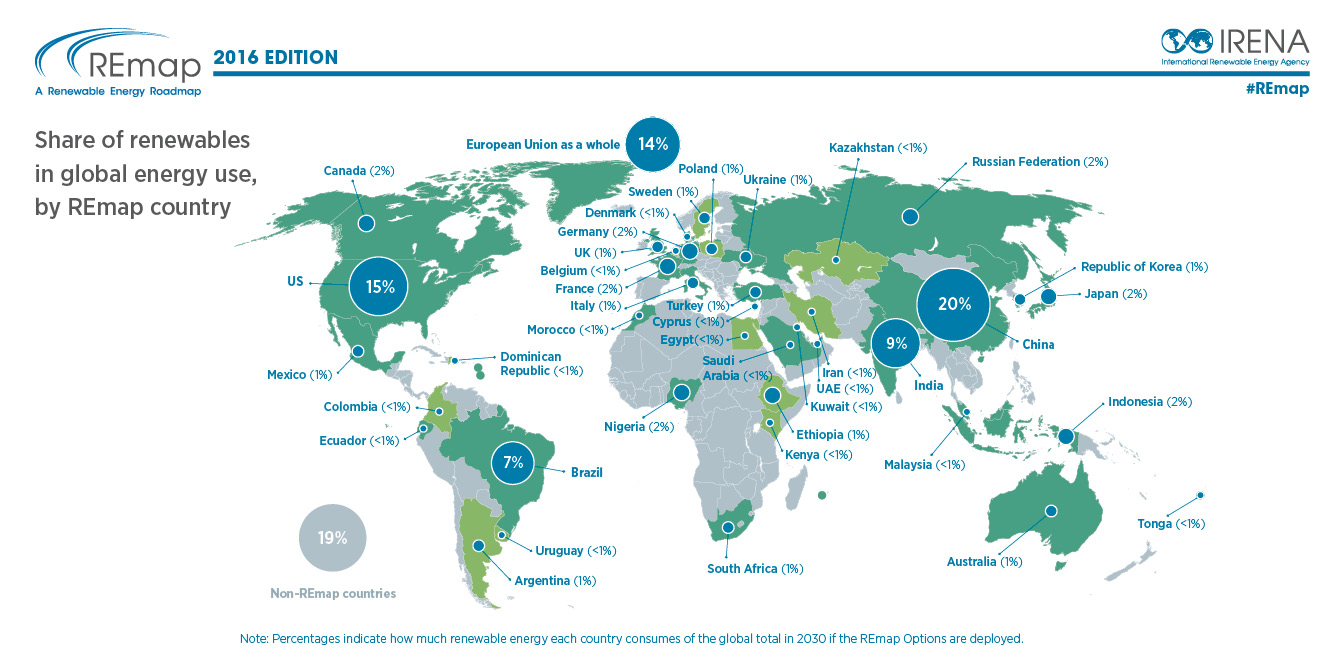A new report by the International Renewable Energy Agency (IRENA) says that doubling the share of renewables in the global energy mix by 2030 can save up to $4.2 trillion annually by 2030, which is 15 times more than the cost. The study, called “REmap: Roadmap for a Renewable Energy Future,” recommends options to boost the share of renewable energy in the global energy mix from just over 18% today to as much as 36% by 2030.
“Achieving a doubling is not only feasible, it is cheaper than not doing so,” says IRENA director-general Adnan Z. Amin. “REmap shows this is not only the most economic pathway, but also the most socially and environmentally conscious. It would create more jobs, save millions of lives from reduced air pollution and set us on a pathway to limit global temperature rise to two degrees, as agreed in Paris.”
The key benefits of doubling renewables would have the following effects:
- Limit average global temperature rise to 2 degrees C above pre-industrial levels (when coupled with energy efficiency);
- Avoid up to 12 gigatons of energy-related CO2 emissions in 2030;
- Result in 24.4 million jobs in the renewable energy sector by 2030 compared with 9.2 million in 2014;
- Reduce air pollution enough to save up to 4 million lives per year; and
- Boost the global gross domestic product by up to $1.3 trillion.
This second edition of IRENA’s global road map broadens its analysis to cover 40 countries that represent 80% of global energy use. According to the report, great strides have been made to increase renewables in the power sector, which is on track to generate roughly 30% of the world’s electricity by 2030 – up from just 23% today.
Under existing national plans, the global renewables share would only reach 21% by 2030. To achieve a doubling, the annual rate of renewable energy deployment would require an average annual investment of $770 billion through 2030. Achieving this would increase the cost of the global energy system by roughly $290 billion per year in 2030. However, the savings achieved through this doubling – thanks to avoided expenditures on air pollution and climate change – are up to 15-times higher than this cost.
To achieve this goal, the report identifies five priorities for action, including the following:
- Correcting market distortions to create a level playing field;
- Introducing greater flexibility into energy systems to accommodate the variable nature of some forms of renewable energy;
- Developing and deploying renewable energy solutions for heating and cooling in new urban development projects and industry;
- Promoting electric vehicles based on renewable power and biofuels to reduce air pollution; and
- Ensuring the sustainable, affordable and reliable supply of bioenergy feedstocks.




